Hello Pizza Friends,
Have you ever stashed dough in the fridge and forgotten about it? Or maybe not forgotten about it but just not gotten to it?
Earlier this week, I found the above-pictured vat of Detroit-style pizza dough in the back of my fridge. I had not dated it, but photos and videos on my phone suggest it was at least 14 days old. Upon removing the lid, it looked very much alive (if a little gray), but it smelled very strongly of alcohol.
Encouraged by many successful bakes with one-week-old (or older) dough, I decided to see how this two-week-old dough would perform. I pressed it into a 9-inch baking pan, drizzled it with olive oil, and let it rest for 4 hours before dimpling it and baking it as I would focaccia.
Upon removing it from the oven, it looked great: it had puffed and browned beautifully all around. But when I halved it horizontally to see the crumb, I knew it was not OK:
It looked gummy and dense, not light and airy. And more important, it tasted terrible, very yeasty and unpleasantly sour. It wasn’t even something I felt comfortable turning into bread crumbs. Into the trash it went.
Remembering a pizza post I had seen on Instagram using very old dough, I reached out to my friend Christy Alia (@realcleverfood on IG, Ooni oven master) to jog my memory, and she pointed me to this post by @pizzarosha, which shows 28-day-old dough rolled out thinly and baked beautifully topped with mango and chorizo.
In the comments, @pizzarosha notes that the pizza tasted very flavorful but slightly more sour than usual. She also notes she keeps her fridge at 4ºC (39.2ºF), which is cool but not unusually so.
So where does this leave us? I consistently use one-week-old (or older) pizza dough with success. Below I’ve included a video in which I make a Margherita pizza with nine-day-old Neapolitan-style dough.
As you will see, upon removing the dough from the fridge, it looks slack, wet, and sticky — not unlike the two-week-old Detroit-style pizza dough — but, as you cannot see, it smells fine. And once it is balled up, it performs nearly as well as two- or three-day-old dough (which I find to be the sweet spot for optimal bakes).
From my experiments, the best indicator of a dough’s fate seems to be its smell: if it smells strongly of alcohol, it’s likely past prime. But if it smells fine despite looking a little past prime, it may be OK.
Friends, how long have you pushed your dough? Please share any thoughts.
The Video: 9-Day Old Dough + Margherita Pizza
9-Day-Old Dough Margherita, Step by Step
Here are two containers of Neapolitan-style dough that have been in the fridge for 9 days:
The dough is wetter and stickier than 2- or 3-day-old dough as well as a little more slack.
Balled up, it feels and looks as good as ever:
After a few hours of rest in the DoughMate…
the dough is light to the touch…
… and filled with air bubbles.
Here I’ve made a simple Margherita: a few tablespoons of No-Cook Tomato Sauce, 3 ounces low moisture, whole milk mozzarella (Calabro is my preference), extra-virgin olive oil, flaky sea salt.
I should have popped more of the bubbles on the outer edge of the dough before baking it (5 minutes at 550ºF convection roast, preheated Baking Steel).
… but overall, it baked up beautifully, with a nice airy cornicione and good flavor all around.
Any topic you’d like covered? Please let me know. See you next Friday 🍕🍕


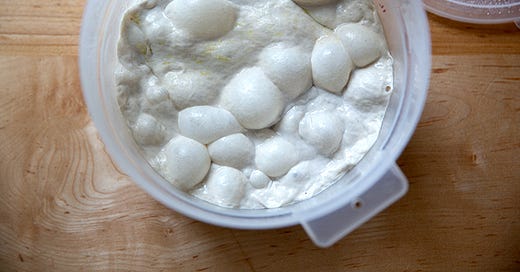



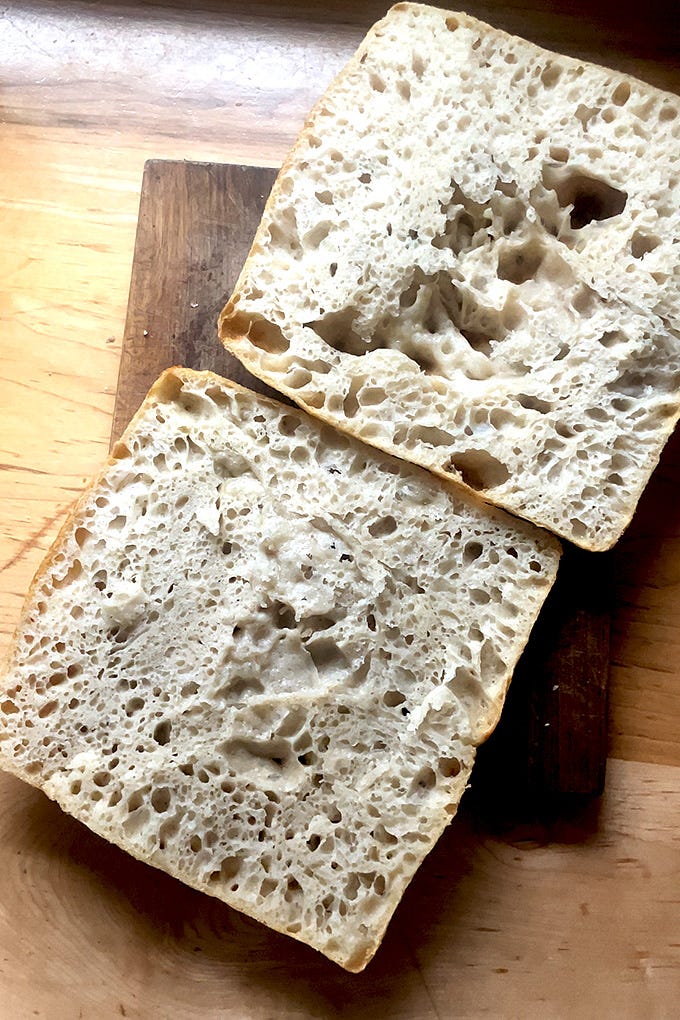

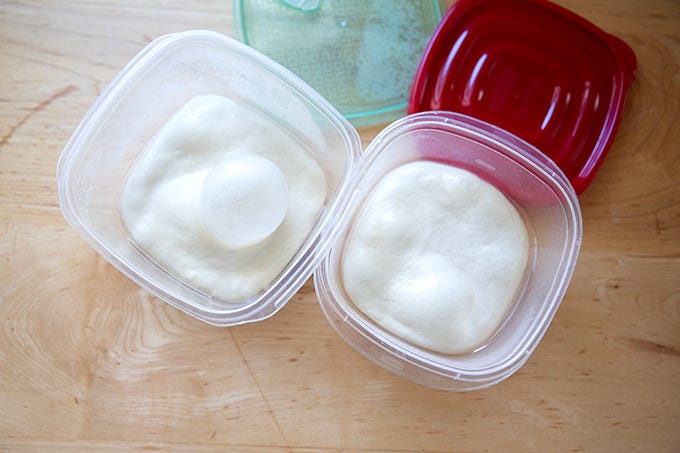
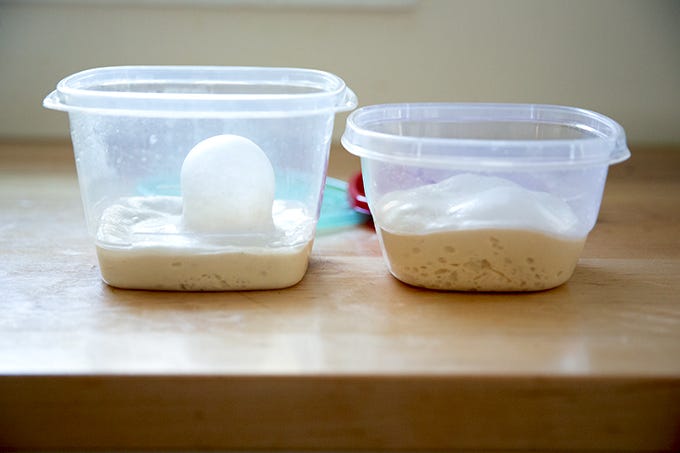
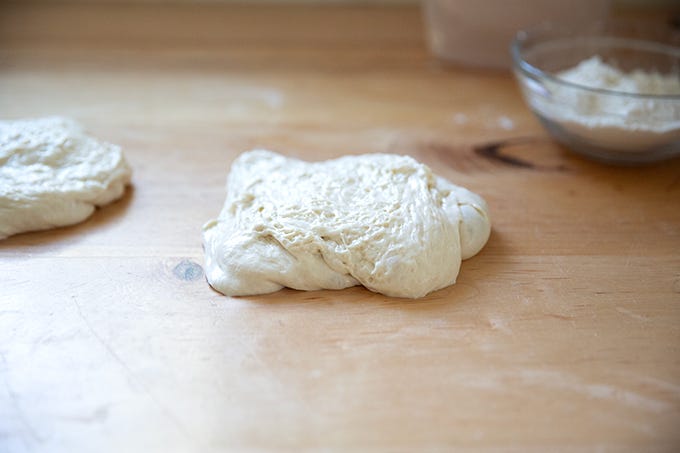
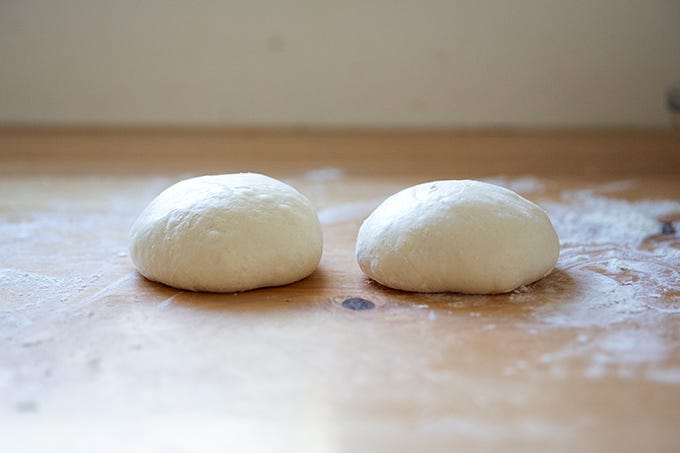
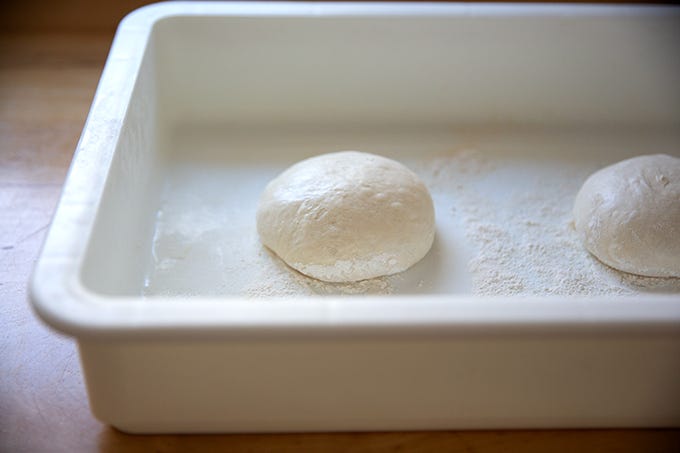
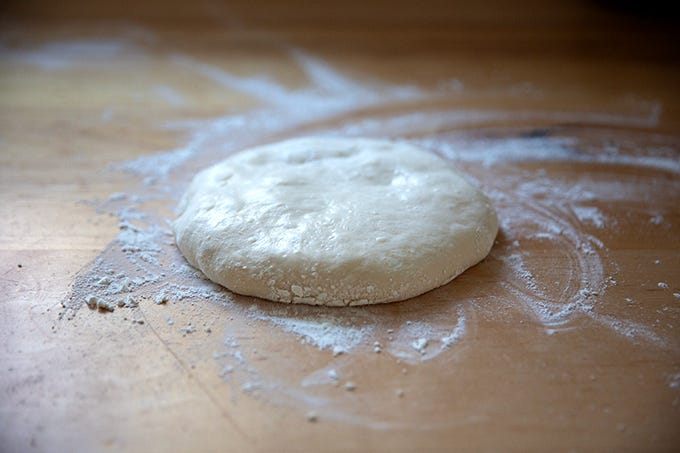
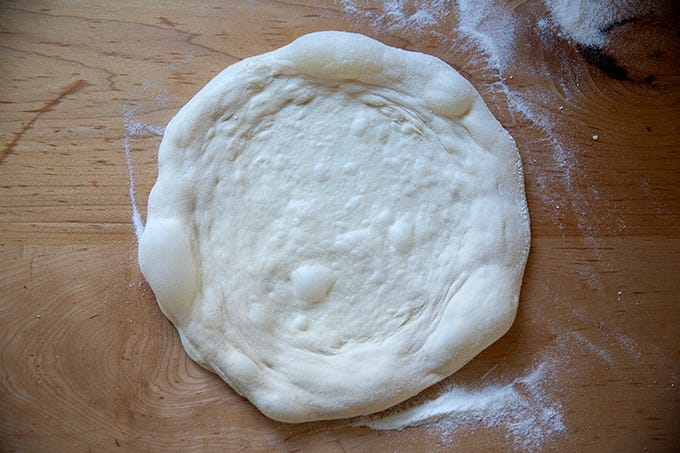
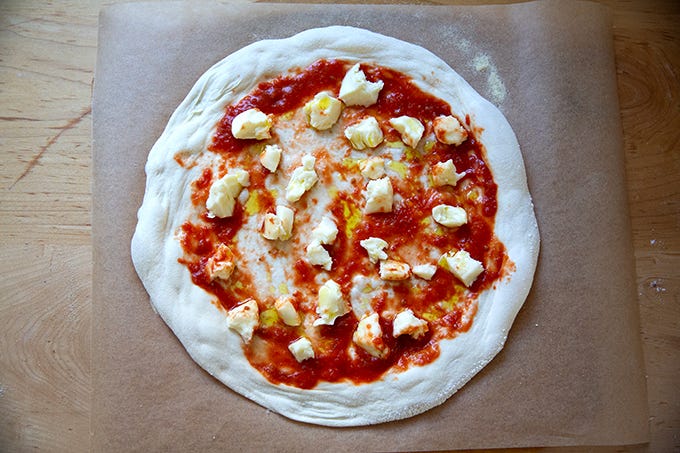



If in doubt, rather than wasting it, pretend it is a sourdough starter. Use a generous amout, add some fresh flour, and try to remember you still have some left in the fridge for next time.
I have kept raw dough frozen for 3 months with good results. Wrap airtight.